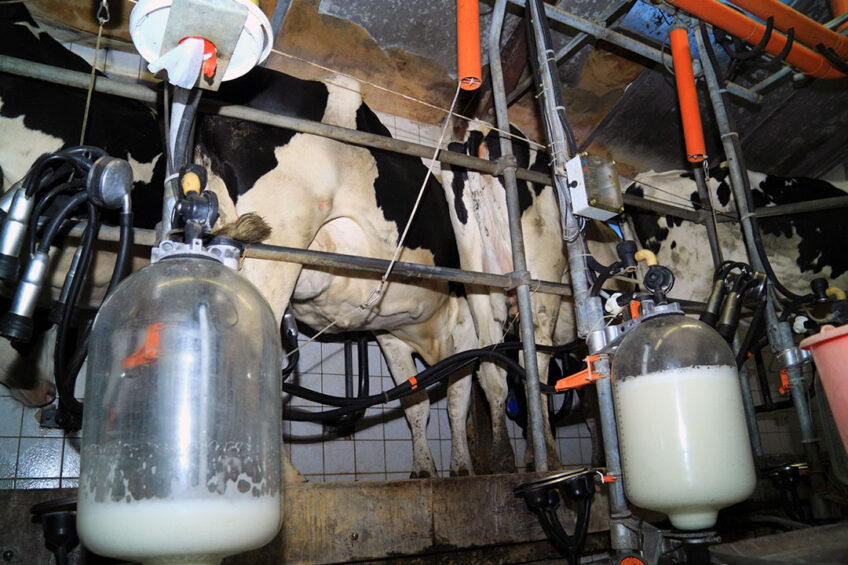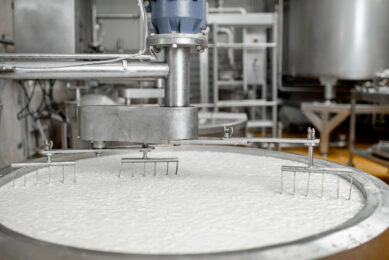Turbulent times for dairy industry in Central Asia

Skyrocketing costs, price caps and insufficient state aid hampered the dairy industry across Central Asia in 2022. Production decline and new price fluctuations seem very likely in the next year, provided the current trends continue, according to dairy plant managers.
What is currently seen is that this part of the world lacks political stability and problems with food supply threaten governments with unpredictable consequences.
Uzbekistan is the largest milk producer in Central Asia, with around 10 million tonnes of milk manufactured last year, official statistical data shows. It is followed by Kazakhstan with 3.92 million tonnes, Kirgizstan with 1.7 million tonnes, and Tajikistan with around 1.1 million tonnes. Turkmenistan doesn’t share consistent data on milk production but is believed to have the lowest output in the region.
Central Asian governments put a lot of effort into establishing new processing capacities over the past few years to meet local demand for cheese, butter and other products. However, dairy operations have been put to the test at all levels, from feed production to packaging of final products.
Denic Dyo, general director of the Telekisky city dairy plant in Kazakhstan, said he had never seen a rise in costs similar to what his operations encountered in 2022. He estimated that, for instance, packaging prices jumped by an astonishing 135% since January.
This upward price rally is one of the consequences of Russia’s invasion of Ukraine. Over the years, Kazakh dairy plants have relied on the import of dairy packaging from its northern neighbour. However, sweeping sanctions imposed by Western countries against the Russian economy triggered a mass exodus of European packaging companies from the country, leaving not only domestic but also the Kazakh market in short supply.
Kazakhstan
Like all countries in Central Asia, Kazakhstan applies price regulation in the domestic dairy market to tame food inflation. In exchange, the dairy plants ask the government to approve state subsidies on dairy products.
“We have been calling for these [state subsidies] for 3 years. If the government constrains our prices, it must help us,” Dyo said.
Production costs rose across the board, though the increase was moderate this year in other fields. Since the beginning of the year, Kazakhstan saw a 20% rise in electricity prices and a 22% rise in raw milk prices. The Kazakh government subsidises raw milk production to encourage farmers to continue operations. Still, dairy companies complain that they need state aid, too.
“The [Kazakh] dairy industry, which has not yet recovered from the consequences of the pandemic and the global economic crisis, faces an increasingly gloomy and uncertain future,” said Vladimir Kozhevnikov, director of the Kazakh dairy union.
Uzbekistan
Uzbekistan – the second-largest Central Asian economy – is facing similar challenges. In October, the country was hit by a shortage of packaged milk, the Russian state news outlet, Ria Novosti, reported. The problem pushed some retailers to limit sales of dairy products to 2-3 packs per customer.
One-litre bags, which are the most popular dairy product among Uzbek customers, almost disappeared from the shelves. To some extent, the problem could be associated with a drop in production at Uzbek milk farms. However, the key reason for the shortage is supply disruptions of packaging material from Russia.
“Dairy producers used to purchase packaging from the Russian branch of Tetra Pack, but since this company pulled out of Russia, the supply of the deliveries was disrupted,” a source in the local retail industry told Ria Novosti.
Currently, all countries in Central Asia are working on new logistic routes to source packaging directly in Europe and China. However, establishing new trade ties takes time.
“Now, the logistics have changed; supplies of Tetra Pak packaging go through new channels, including from Europe, which increases both the delivery time and its cost,” another source told the Russian state publication.
Unreliable dairy data
Some analysts have expressed that in some Central Asian states, the official statistics often don’t correspond to reality.
In November, the Moscow-based think tank, Dairy Intelligence Agency, reported that Kazakhstan’s self-sufficiency in raw milk was close to 25%, instead of 70% estimated by government agencies. The analysts described the official estimation as ‘fiction’ designed to reassure the market and the population that Kazakhstan had a high level of self-sufficiency in milk.
This problem is believed to be typical in the entire CIS region to different degrees. It is associated with exaggerations in the supply chain, commonly known as ‘pripiski’ in Russia, which dates back to the Soviet times.
Back then, the targets set for state managers were often unrealistic, and they used the ‘pripiski’ ways to avoid liability of not fulfilling the state plan. At a later stage of the Soviet Union’s existence, ‘pripiski’ created a paradoxical situation in several sectors of the economy. In the 1980s, the Soviet Union was hit by a shortage of consumer goods, resulting in empty shelves of groceries and ‘unknown’ trade. At the same time, the statistical data showed that the Soviet Union had sufficient consumer goods.
There are signs that not only in Kazakhstan but the declared production figures also differ from the actual situation. In the first half of 2022, Uzbekistan manufactured 5.14 million tonnes of milk, almost as much as in the same period of the previous year. However, dairy plants complained about the shortage of raw milk.
Raw milk deficit
Usmonbek Sharipov, commercial director of Tillo Domor, a privately-owned dairy company based in the Khorezm region, Uzbekistan, told Radio Ozodlik that the milk supply had significantly decreased in the region in the previous 3 months.
“As a result [of the milk shortage], our plant cannot operate at full capacity. There is no milk. This affects the prices of dairy products. Now, together with our Austrian partners, we are completing the construction of a milk processing plant with a capacity of 100 tonnes per day. But due to the current situation, we are considering launching it with a capacity of 50 tonnes per day,” Sharipov said.
The milk shortage could become a widespread problem for Uzbekistan since farmers are slaughtering their cows, discouraged by skyrocketing feed costs.
“There are already grounds for such fears,” said Muyassar Abdullayeva, head of the Khorezm dairy farm Akhmad Abdullayev, adding that the price of raw milk has more than doubled since mid-2022. “In June, 1 litre of milk cost 2,500 soums (€0.2). Now, it is 6,000 soums (€0.49), depending on the fat content. The reason is that keeping cows is expensive now because feed prices have increased. Due to this, many people stopped keeping cows. This is why there is a shortage of milk,” said Abdullayeva.
There are occasional reports that dairy farmers in Kyrgyzstan and Tajikistan experience difficulties due to expensive feed. Kazakhstan is a big grain exporter and managed to constrain the rise in prices on the domestic grain market. Other Central Asian countries rely on grain imports and have no such opportunity.
Long-term prospects look worrying
This year’s price turbulence on the global grain market comes at a high cost for Central Asia. In the face of the rising grain prices, in June 2022, the president of Tajikistan, Emomali Rahmon, called on the population to stock up on food for the coming 2 years.
“I repeat once again that this and next year will be the most difficult years in the history of mankind and, above all, in terms of ensuring food security,” the president said.
For Central Asia, the global problems have been further complicated by drought, which in some parts of the regions was the worst in the past 13 years. In Kazakhstan, the regional authorities reported that 2,000 cows died in 2 regions during the summer due to a lack of feed and water. Cattle mortality occurred in Uzbekistan and Kyrgyzstan, which could explain the current raw milk supply problems.
Dairy producers in Central Asia are looking to 2023 with great concern. The worsening economic situation across the region promises nothing good regarding state aid and the population’s purchasing power. At the same time, most companies expect production costs to keep climbing.










